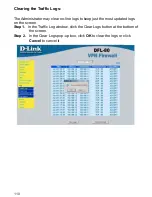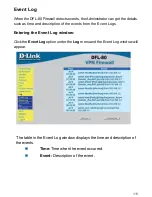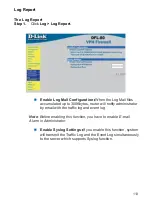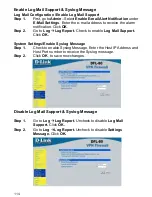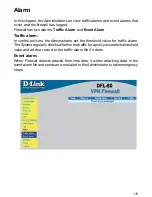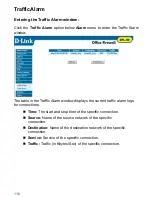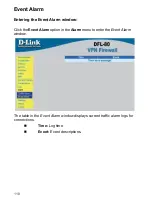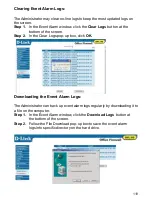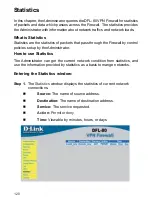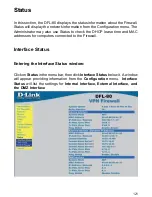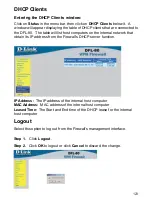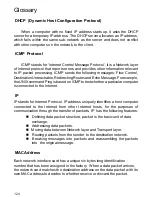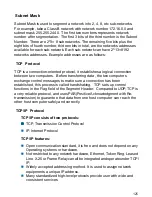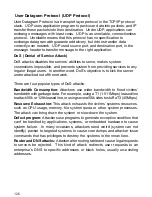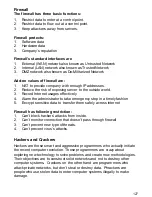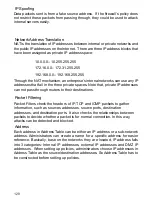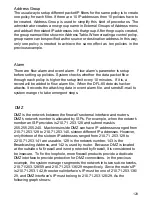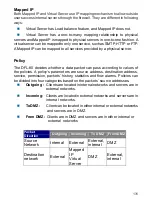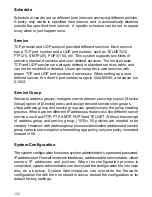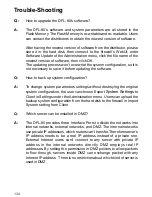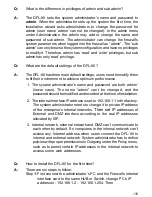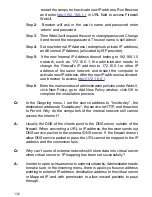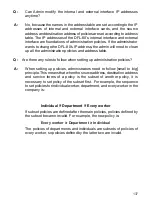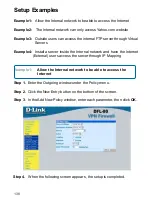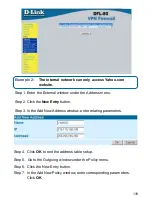
124
Glossary
DHCP
(Dynamic Host Configuration Protocol)
When a computer with no fixed IP address starts up, it asks the DHCP
server for a temporary IP address. The DHCP server allocates an IP address,
which falls within the same sub-network as the server and does not conflict
with other computers on the network, to the client.
ICMP Protocol
ICMP stands for ‘Internet Control Message Protocol’, it is a Network layer
of Internet protocol that reports errors and provides other information relevant
to IP packet processing. ICMP sends the following messages: Flow Control,
Destination Unreachable, Redirecting Routes and Echo Message. For example,
the UNIX command Ping is based on ICMP to test whether a particular computer
is connected to the Internet.
IP
IP stands for Internet Protocol. IP address uniquely identifies a host computer
connected to the Internet from other Internet hosts, for the purposes of
communication through the transfer of packets. IP has the following features:
!
Defining data packet structure, packet is the basic unit of data
exchange.
!
Addressing data packets.
!
Moving data between Network layer and Transport layer.
!
Routing packets from the sender to the destination network.
!
Breaking messages into packets and reassembling the packets
into the original message.
MAC Address
Each network interface card has a unique six bytes long identification
number that has been assigned in the factory. When a data packet arrives,
the network card matches the destination address on the data packet with its
own MAC address to decides to whether receive or discard the packet.

